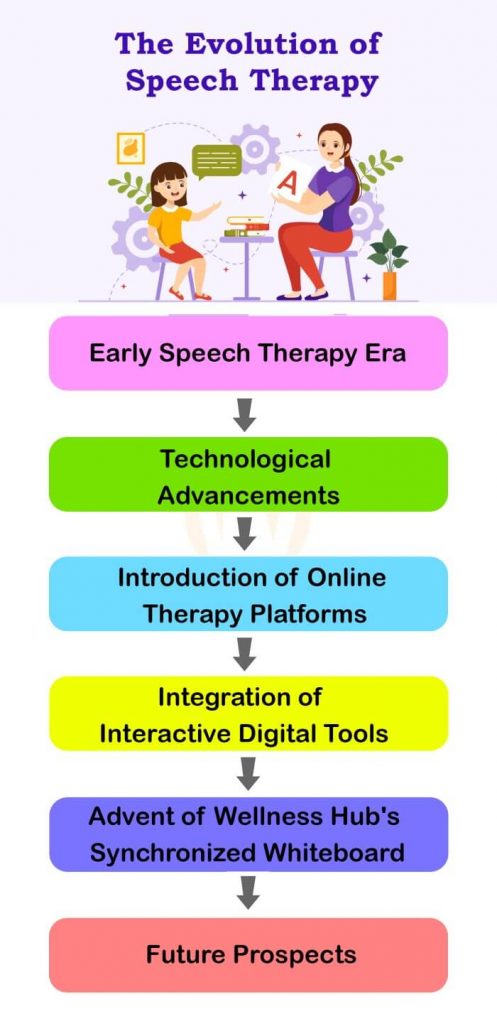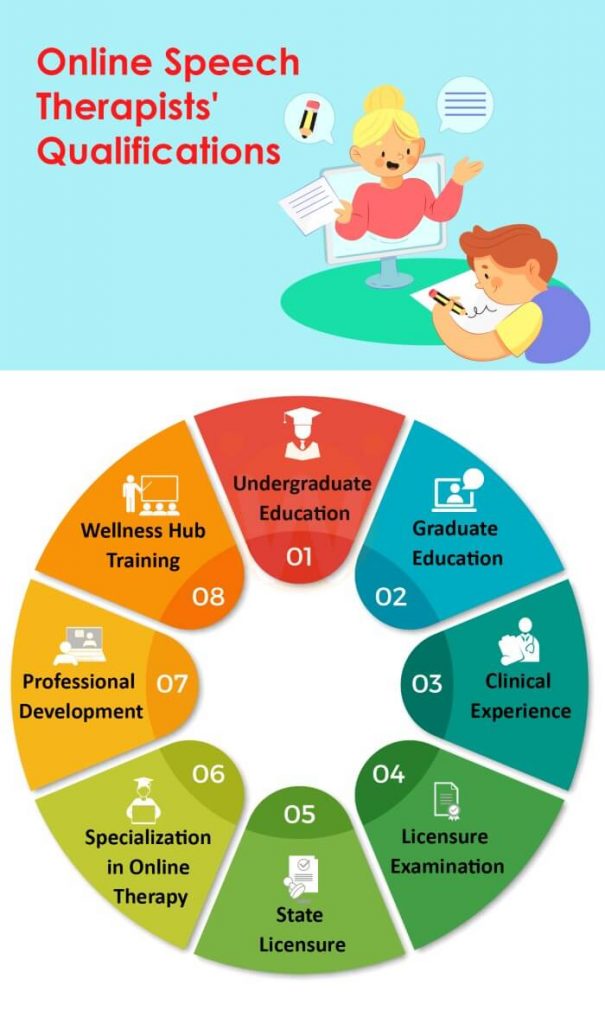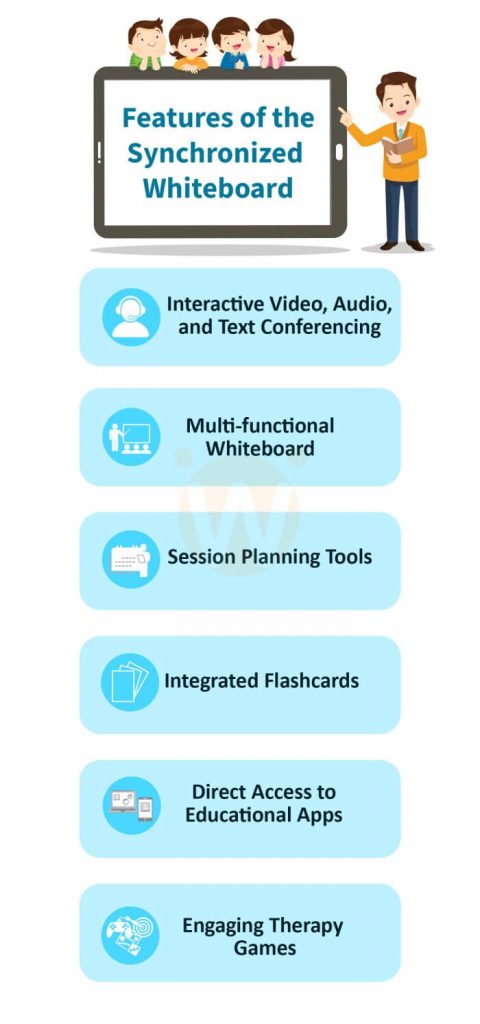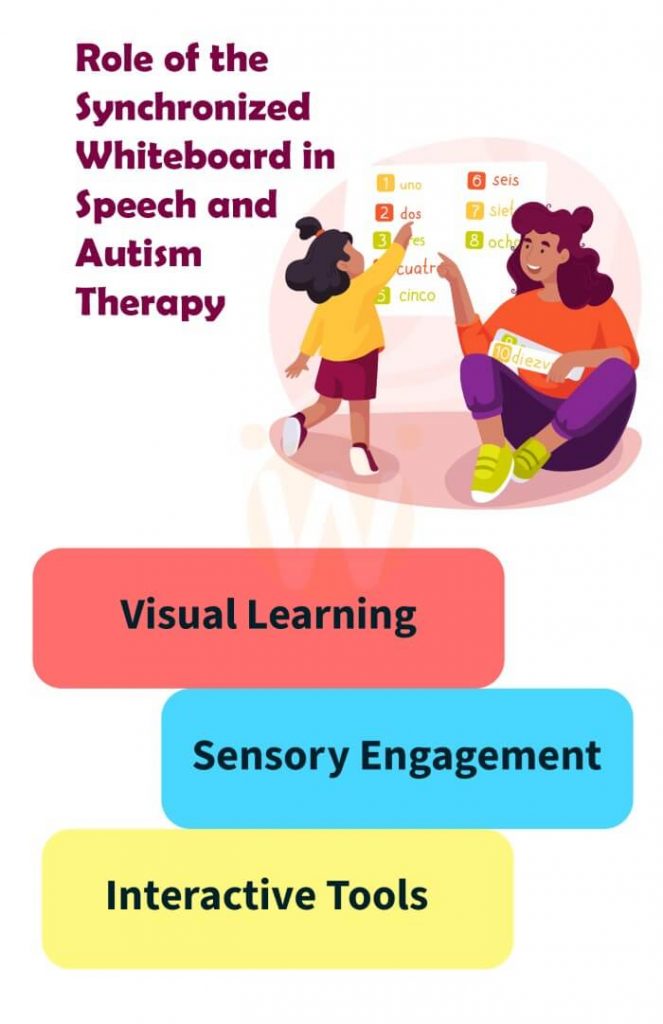How Online Speech Therapists Help Kids: Key Benefits Explained
By Rajini D
Last Updated: October 18, 2024
The field of speech therapy has experienced a significant transformation, driven by the rise of digital technology. This evolution is breaking down barriers of distance and accessibility, making therapy more inclusive and adaptable than ever before. Speech therapy is no longer confined to traditional in-person settings. With the help of online platforms, therapy has entered the digital age, offering flexible, innovative approaches to meet the diverse needs of children and families.
Book Free Speech Therapy Consultation.
How Online Speech Therapy is Revolutionizing Speech Development
Online speech therapy has opened up new opportunities for families who struggled to access traditional in-person therapy. Whether due to living far away, physical challenges, or busy schedules, many people found it hard to get the help they needed. Now, thanks to the internet, speech therapists can connect with clients wherever they are, making therapy more accessible and flexible.
For example, a parent living in a rural area can now easily schedule speech therapy sessions for their child without needing to travel. This new way of delivering therapy ensures that children receive the help they need, even from the comfort of their own home.
Wellness Hub’s Synchronized Whiteboard: A Game-Changer in Online Speech Therapy
In this digital age, Wellness Hub is leading the way with innovative tools that make online speech therapy even more effective. One of these tools is the Synchronized Whiteboard, which helps therapists and clients work together in real-time. Whether practicing speech sounds or using visual aids, this tool makes the session more interactive and engaging.
For example, during a session, a therapist can use the Synchronized Whiteboard to write words or show pictures, making it easier for the child to follow along. This tool helps both the therapist and the child stay connected and focused, ensuring progress in therapy.
How Online Speech Therapy is Transforming Traditional Approaches

From Traditional to Online: A Big Shift
The shift from traditional in-person speech therapy to online platforms has changed the way therapy works. It’s now easier for people to get the help they need, no matter where they live or how busy they are.
For example, a parent who has a packed schedule can now book speech therapy sessions online, making it easier for their child to receive help without missing school or work. This flexibility is one of the key ways online speech therapy is making a difference.
Key Benefits of Online Speech Therapy for Kids and Parents
- Accessibility: Online speech therapy opens up services to more people, especially those in rural or underserved areas.
Example: A child living in a small town with no speech therapists can now connect with a specialist online. - Convenience: Families can get therapy from home, saving time and money on travel.
Example: Parents with busy lives can easily schedule therapy sessions without having to drive to a clinic. - Customized Learning: Online tools allow therapy to be personalized to each client’s needs, with activities and resources that suit their progress.
Example: A therapist can change exercises during a session to make sure it fits the child’s current level. - Engagement: Online sessions are made fun with interactive tools like games and visual aids, keeping children engaged.
Example: A child who struggles to focus in traditional settings may find it easier to stay focused with online games and activities.
| Aspect | Benefits | Challenges |
|---|---|---|
| Accessibility | Wider audience reach | Requires reliable technology and internet access |
| Convenience | Therapy from home | Dependent on stable internet connection |
| Engagement | Interactive digital tools enhance fun | Harder to build a personal connection |
Overcoming Challenges in the Shift to Online Speech Therapy
While online speech therapy offers many benefits, some challenges exist:
- Technology Access and Literacy: Not everyone has access to the necessary devices or knows how to use them confidently.
Solution: Therapists can provide simple instructions or quick training for parents and children. - Internet Stability: A stable internet connection is needed for smooth sessions.
Solution: Families can check their connection before a session to avoid disruptions. - Maintaining Personal Connection: It can be harder to create a strong personal bond through a screen compared to face-to-face meetings.
Solution: Therapists can start sessions with a few minutes of personal check-in to build rapport with the child.
Comparing Traditional and Online Speech Therapy
| Feature | Traditional Therapy | Online Therapy |
|---|---|---|
| Location | In-clinic | Anywhere with internet access |
| Tools Used | Physical materials like flashcards | Digital platforms with whiteboards, apps, and games |
| Accessibility | Limited by geography; requires travel | Accessible from anywhere with an internet connection |
| Customization | Standard materials with less flexibility | Highly personalized in real-time |
What Speech Therapists Do in Online Speech Therapy
- Assessment and Diagnosis: Online speech therapists assess and diagnose speech, language, and communication challenges using virtual tools.
- Interactive Therapy: They deliver therapy through video calls, interactive whiteboards, and digital activities to keep children engaged.
- Personalized Support: Therapists customize each session based on the child’s needs, using games, flashcards, and exercises.
- Parent Guidance: They provide parents with advice on how to support their child’s progress at home.
- Flexibility: Therapy is accessible from anywhere, making it easier for children to receive care without traveling.
- Ongoing Adjustment: Therapists adapt their methods in real-time to ensure children remain focused and make progress.
With online platforms, speech therapists can help more children, offering flexible and personalized care from the comfort of home.
Qualifications and Roles of Online Speech Therapists
Educational and Professional Qualifications
Becoming a qualified speech therapist requires following a clear educational path. This typically begins with a bachelor’s degree in fields like communication sciences and disorders. The next key step is earning a master’s degree in speech-language pathology. These accredited programs provide the in-depth knowledge and skills needed to help clients with various speech and communication disorders.

After completing their education, speech therapists must obtain licensure, which generally includes passing a national exam. This step ensures that therapists are qualified to practice and meet the professional standards of the field. Continuing education is also important, as it allows therapists to stay updated on the latest research, tools, and practices in speech therapy.
Roles in an Online Setting
In an online setting, speech therapists play multiple roles. They assess, diagnose, and treat speech, language, social communication, cognitive-communication, and swallowing disorders in both children and adults. Unlike traditional therapy, online therapists use digital tools to conduct assessments and deliver therapy, which requires them to be comfortable and skilled with virtual platforms.
For example, an online therapist might use interactive apps or digital whiteboards to help a child practice speech sounds, or they may guide parents through video calls on how to support their child’s progress at home. The ability to effectively use these digital tools ensures that therapy remains just as impactful online as it would be in person.
Wellness Hub’s Synchronized Whiteboard – A Revolutionary Tool
Introducing the Synchronized Whiteboard
In the world of online speech therapy, Wellness Hub has introduced a game-changing tool: the Synchronized Whiteboard. This isn’t just any digital whiteboard—it’s a fully integrated system designed to make online speech therapy sessions as engaging and effective as face-to-face meetings.

Key Features of the Synchronized Whiteboard
1. Interactive Video, Audio, and Text Conferencing
This feature makes communication easy between therapists and clients. Text conferencing is especially useful for children with different communication needs.
Example: A therapist can use text to give instructions to parents when working with a non-verbal child, so everyone stays informed.
2. Multi-functional Whiteboard
Therapists can draw, write, and upload pictures on the whiteboard, making therapy more fun and interactive, especially for younger children.
Example: A therapist can draw shapes or upload pictures of objects for a child to identify, helping them practice language in a playful way.
3. Session Planning Tools
These tools help therapists organize their sessions. Visual schedules guide children through the session, and a reward system gives them instant positive feedback.
Example: A therapist can create a schedule for the session and reward the child with virtual stickers after each activity.
4. Integrated Flashcards
Flashcards are important for speech therapy, and the whiteboard makes them easily accessible. They help children practice language and memory exercises.
Example: A therapist can quickly bring up flashcards to practice vocabulary with a child and adjust the difficulty as needed.
5. Engaging Therapy Games
Games like “Spin the Wheel” and “Pop the Balloon” make therapy fun. They help kids practice speech skills while keeping them motivated.
Example: After completing a speech task, a child can play “Spin the Wheel” as a reward, keeping them excited for the next exercise.
Know more about on How Tele-BASICS Transforms Speech Therapy for Kids with Engaging Tools and Games
The Impact of the Synchronized Whiteboard
The Synchronized Whiteboard by Wellness Hub has transformed online speech therapy by creating a platform that combines education, interaction, and fun. It ensures that online sessions are as effective and engaging as traditional in-person therapy, providing children with a supportive environment to learn and grow.
Impact on Speech Therapy and Autism Therapy

Enhancing Speech Therapy with the Synchronized Whiteboard
Wellness Hub’s Synchronized Whiteboard has made speech therapy more interactive and fun. This tool helps make therapy sessions more effective, especially for children who learn better with visuals and interactive activities.
- Visual Learning: The whiteboard can show pictures, drawings, and notes in real time, making it easier for children to learn new speech sounds.
Example: A therapist can draw or show pictures to help a child practice saying new words. - Real-Time Feedback: Therapists can give quick feedback during sessions, helping children correct their speech right away.
Example: If a child says a word incorrectly, the therapist can instantly help them fix it using the whiteboard. - Engagement: The interactive features of the whiteboard keep children interested and motivated during therapy.
Example: Using fun drawings or simple games on the whiteboard makes the session more enjoyable for kids.
Role in Autism Therapy
The Synchronized Whiteboard is also very helpful in autism therapy, where a structured and engaging approach is needed.
- Structured Learning: The whiteboard allows therapists to organize the session clearly, which helps children with autism who prefer routine and predictability.
Example: A therapist can create a visual schedule on the whiteboard so the child knows what will happen next during the session. - Sensory Engagement: The whiteboard offers a mix of visual and sensory experiences, which can help children with autism stay focused.
Example: Using the whiteboard’s visual and sound features can keep a child with autism engaged and interested in the session.
The Synchronized Whiteboard in Practice
Utilization in Therapy Sessions
The Synchronized Whiteboard is not just a theoretical tool; its practical application in therapy sessions has yielded positive results.
- Interactive Sessions: Therapists use the whiteboard to create a dynamic learning environment, incorporating games, flashcards, and real-time drawing to explain concepts.
- Customizable Approach: Each session The Synchronized Whiteboard isn’t just a concept; it’s actively used in therapy sessions with great success.
- Interactive Sessions: Therapists use the whiteboard to create an engaging environment, incorporating tools like games, flashcards, and real-time drawings to explain speech and language concepts.
Example: A therapist might play a game using the whiteboard to help a child practice different speech sounds, making the session more fun and effective. - Customizable Approach: The whiteboard allows therapists to tailor each session to the specific needs of the client, making therapy more personal and impactful.
Example: For a child who struggles with vocabulary, the therapist can focus the session on practicing words through interactive activities on the whiteboard. It can be tailored to the client’s individual needs, making therapy more effective and personal.
How the Synchronized Whiteboard Personalizes Speech Therapy for Kids
Tailoring to Individual Needs
The Synchronized Whiteboard from Wellness Hub is great because it can be customized to meet the needs of each client.
- Personalized Sessions: Therapists can change the tools on the whiteboard to match how each client learns best.
Example: A child who likes pictures can have more visuals in their session, while another might need more words or sounds. - Flexibility in Therapy: Therapists can adjust the session quickly if needed, making it more fun and helpful for the client.
Example: If a child struggles with an activity, the therapist can easily switch to a new one without stopping the session.
Comparison with Mainstream Options
The Synchronized Whiteboard is different from regular digital tools because it’s made just for speech therapy.
- Targeted Functionality: Unlike basic whiteboards, it has special features for speech therapy that make it more useful for therapists and clients.
Example: While other whiteboards just let you draw, the Synchronized Whiteboard has flashcards and games designed for speech practice. - Comprehensive Resource Integration: All the tools needed for therapy are built into the whiteboard, making it a complete solution.
Example: Instead of using several apps, therapists can do everything from one place, making the session smoother and keeping the child focused.
Customization Options in the Synchronized Whiteboard
| Feature | Description | Benefit |
|---|---|---|
| Session Templates | Pre-designed and easily modifiable templates for various therapy sessions. | Saves time for therapists in session planning and ensures consistency across sessions. |
| Interactive Tools | A variety of engaging tools including games, flashcards, and interactive exercises. | Enhances client engagement and aids in the learning process, especially beneficial for keeping younger clients focused. |
| Real-time Feedback | Capability for therapists to provide immediate correction and guidance during sessions. | Improves the effectiveness of therapy by allowing for instant adjustments and personalized responses to client needs. |
Conclusion
Online speech therapy is changing the way families access care, offering flexibility, convenience, and personalized support. With tools like Wellness Hub’s Synchronized Whiteboard, therapy becomes interactive, engaging, and effective for children with speech delays or autism. This digital transformation removes barriers like distance and time, allowing more children to receive the help they need.
Frequently Asked Questions:
1. What role do speech therapists play in online settings?
In online settings, speech therapists assess, diagnose, and treat communication disorders through virtual platforms. They use digital tools to interact with clients, providing customized therapy sessions, and utilize various online resources to aid in the treatment process.
2. How has online speech therapy evolved in recent years?
Online speech therapy has evolved significantly, with advancements in technology enabling more interactive and effective sessions. The rise of digital tools like Wellness Hub’s Synchronized Whiteboard has revolutionized the field, making therapy more accessible and engaging.
3. What qualifications are required for online speech therapists?
Online speech therapists typically hold a master’s degree in speech-language pathology and are required to be licensed. They also need to be proficient in using digital platforms and tools for providing therapy online.
4. How does Wellness Hub’s Synchronized Whiteboard support online speech therapy?
Wellness Hub’s Synchronized Whiteboard supports online speech therapy by providing an interactive platform that includes video, audio, text conferencing, and multifunctional whiteboard capabilities. It enhances client engagement and facilitates real-time collaboration between therapists and clients.
5. What are the benefits of receiving speech therapy online?
Online speech therapy offers benefits such as greater accessibility, especially for those in remote areas, flexibility in scheduling, and the comfort of receiving therapy in a familiar home environment. It also allows for a wide range of interactive and engaging therapy tools.
6. Can online speech therapy be as effective as in-person sessions?
Yes, with the right tools and approaches, online speech therapy can be as effective as in-person sessions. The key is the use of comprehensive digital platforms and resources, like the Synchronized Whiteboard, which provide an immersive therapy experience.
7. Is the Synchronized Whiteboard suitable for all types of speech therapy clients?
Yes, the Synchronized Whiteboard is adaptable to a wide range of clients, including children, adults, and individuals with autism. Its customizable features allow therapists to tailor sessions to each client’s specific needs.
8. How important is parental involvement in online speech therapy?
Parental involvement is crucial in online speech therapy, especially for children. It helps in reinforcing the skills learned during sessions and provides a supportive environment for continuous improvement at home.
9. Are there specific features in the Synchronized Whiteboard designed for autism therapy?
Yes, the Synchronized Whiteboard includes features like structured learning tools, sensory engagement activities, and interactive games, making it highly effective for autism therapy.
10. How can families and therapists access Wellness Hub’s Synchronized Whiteboard for online speech therapy?
Families and therapists can access the Synchronized Whiteboard by visiting Wellness Hub’s website The site offers detailed information, subscription options, and resources on how to integrate the whiteboard into speech therapy sessions.
About the Author:
Rajini Darugupally
M.Sc., Speech-Language Pathologist (9+ years of experience)
Rajini is a passionate and dedicated Speech-Language Pathologist with over 9+ years of experience, specializing in both developmental speech and language disorders in children and rehabilitation in adults. Driven by a desire to empower each individual to find their voice, Rajini brings a wealth of experience and a warm, genuine approach to therapy. Currently, at Wellness Hub, she thrives in a team environment that values innovation, compassion, and achieving results for their clients.
Book your Free Consultation Today
Parent/Caregiver Info:
Client’s Details:
* Error Message








